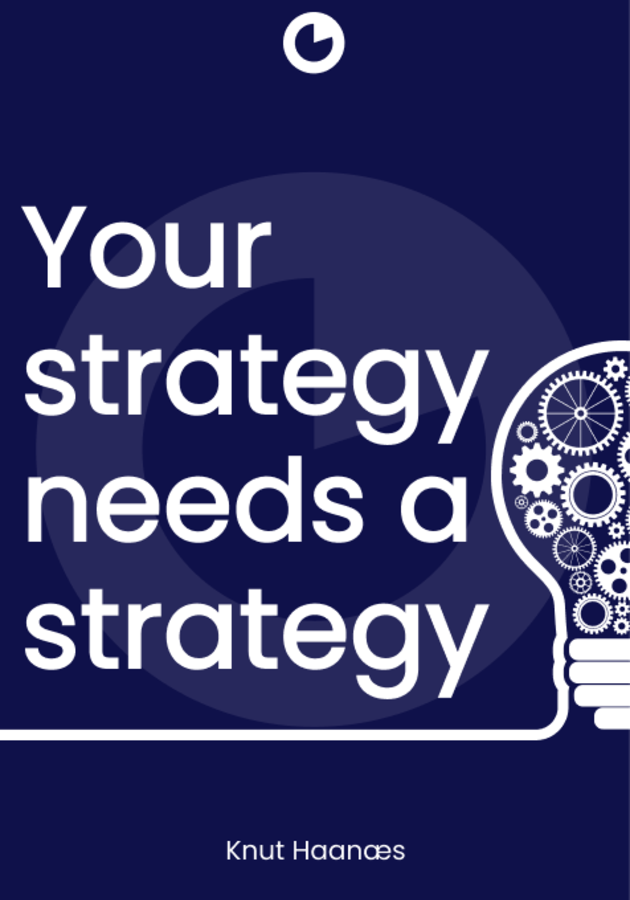This book talks about the transformative potential of artificial intelligence (AI) across various sectors, continuing the discussion from their previous book, "Prediction Machines." The authors explain how AI will reconstruct industries, companies, and societal systems, much like electricity did in the past. It presents a framework for understanding AI’s role in decision-making and the redistribution of economic power. The authors argue that AI’s real value lies in enhancing prediction, leading to better decision-making.
However, they caution that the power doesn’t reside in AI itself but in those who control and apply it, emphasizing the importance of judgment in leveraging AI predictions. Each chapter of the book gives profound insights into how AI is already impacting innovation, early adoption strategies, the integration of AI into complex systems, and the challenges of adapting to AI-driven changes. The authors discuss AI’s role in personalization, automation, and its potential to revolutionize industries like medical research, customer service, and education.
The path of technological change
The opening chapters describe the transformative impact of electricity on society and industry, comparing it to the current state of AI. Initially, at the turn of the twentieth century, despite the promising demonstration of electricity by Thomas Edison in the late 1870s, its adoption was slow, with only a small fraction of households and factories using it. This period of minimal change, known as "The Between Times," reflects the gradual shift from early enthusiasm to widespread utility, highlighting that technological adoption often requires time.
The chapter then examines how entrepreneurs during the Industrial Revolution approached the commercialization of electricity through three types of solutions: point solutions, application solutions, and system solutions. Point solution entrepreneurs focused on replacing steam power with electricity at specific points of use, such as in individual machines or streetcars, demonstrating electricity's benefits like lower operating costs and reduced maintenance.
Application solution entrepreneurs saw the potential to redesign machines to work directly with electric motors, enhancing flexibility and efficiency. This led to innovations like portable machines and more precise power usage, though it required significant redesigns. System solution entrepreneurs, however, envisioned a complete overhaul of factory design, leveraging electricity to optimize production layouts and workflows, as exemplified by Henry Ford's assembly line.
This comprehensive approach enabled substantial productivity gains and reshaped industrial practices. Drawing parallels to AI, the authors argue that we are currently in "The Between Times" for AI, similar to the early days of electricity. Just as electricity's real impact emerged from system-level innovations rather than mere point or application solutions, AI's transformative potential lies in its ability to decouple prediction from decision-making processes.
By focusing on system-level solutions, AI can drive significant advancements in productivity and organizational design, offering opportunities for those who innovate and adapt their systems accordingly. The authors also emphasize that, like electricity, AI's disruptive power will manifest through new systems that reshape industries and economic power dynamics, underscoring the importance of designing and implementing comprehensive, system-level solutions for realizing AI's full potential.
Lessons from the electricity era
The conference in Toronto, which aimed to set the research agenda for AI's economic impact, attracted significant attention from notable economists and researchers, such as Nobel laureates Paul Milgrom, Daniel Kahneman, and Joseph Stiglitz. The authors capture the optimism about AI’s transformative potential, akin to the impact of electricity, contrasted with the current paradox of declining productivity growth despite rapid advancements in AI.
This paradox mirrors historical patterns seen with earlier technologies, suggesting that AI, like electricity, might be in a period of "The Between Times," where its transformative effects are not yet fully realized. The discussion emphasizes that while AI has made notable progress in predictive analytics, its widespread economic benefits remain elusive. The authors explain that AI's impact so far has been limited to "point solutions" and "application solutions" that enhance existing procedures or introduce new ones without fundamentally changing the system.
In contrast, "system solutions" require substantial modifications to existing systems and processes to unlock AI’s full potential. The chapter argues that while point and application solutions offer immediate benefits, true transformation will occur when AI is integrated into broader system changes that enhance decision-making across entire industries.
The narrative also includes some parallels with the adoption of electricity, noting that initial applications did not revolutionize the economy until broader systemic changes were made. Similarly, AI's potential will be realized when its predictive capabilities are fully leveraged across organizational systems, not just in isolated applications. The chapter also explores the disruptive nature of such system-wide changes, which can shift power dynamics and economic value within industries.
AI's potential to revolutionize decision-making
The authors explore the concept that while economic models often portray humans as perfectly rational decision-makers, real-life decision-making is far more complex and often irrational. They acknowledge that economists recognize the limitations of their models, which assume a level of rationality that rarely exists in practice. Instead, people frequently avoid making decisions due to cognitive overload and the desire to simplify their lives.
Examples like Steve Jobs' and Mark Zuckerberg’s daily outfits illustrate how simplifying choices in trivial matters can conserve mental resources for more significant decisions. The chapter discusses how people tend to rely on default rules or habits rather than making decisions for every choice, which can be a way to manage the cognitive costs associated with decision-making.
The authors also mention Herbert Simon's concept of "satisficing," where people opt for solutions that are good enough rather than optimal, given the limitations in information and cognitive capacity. They explain that decisions are more likely to be made when the consequences are high or the information required is costly. For example, the choice of whether to carry an umbrella involves weighing the costs of getting wet against the inconvenience of carrying an umbrella, with the complexity of this decision varying based on available information.
The chapter highlights that AI prediction can potentially shift some of these latent decisions into actual decision-making by providing better information, which could lead people to abandon default rules and make more informed choices. However, this shift involves breaking existing habits and adapting to new decision-making processes. The authors argue that businesses and organizations are particularly resistant to such changes due to their reliance on standard operating procedures (SOPs) designed to maintain reliability and minimize uncertainty.
While AI has the potential to enhance decision-making by supplying valuable predictions, it must be integrated thoughtfully into existing systems that are built around fixed rules. The challenge lies in recognizing and capitalizing on the opportunities presented by AI to replace outdated rules with more dynamic decision-making approaches.
AI’s potential in revolutionizing airports and public health
The authors explore how modern airports are designed not just as transportation hubs but as destinations themselves. This shift is largely a response to the increasing uncertainty and complexity involved in air travel, such as traffic, parking, and security procedures, which compel passengers to arrive earlier and spend more time at airports. However, this convenience hides the underlying uncertainty that drives these changes—uncertainty that could potentially be addressed by AI technologies.
AI could revolutionize airport experiences by predicting traffic, security wait times, and even flight delays, thereby reducing the need for passengers to arrive excessively early. The authors also contrast the commercial airport experience with that of private terminals, which, being free of such uncertainties, remain spartan. The discussion extends to other domains like agriculture, where AI is used to manage risks such as pest infestations, suggesting that AI has the potential to replace the rigid rules and structures built to manage uncertainty.
Ultimately, the authors argue that AI could enable more informed, flexible decisions, reducing inefficiencies and transforming how systems like airports and greenhouses operate. Here we also get insights about the role of AI in pandemic management, focusing on the Covid-19 pandemic as a case study. They argue that while AI had the potential to significantly aid in managing the pandemic, it was not utilized effectively due to the reliance on rigid public health rules rather than adaptive decision-making.
The chapter emphasizes that Covid-19, while a health crisis for those infected, was primarily an information problem for the broader population. The lack of precise information about who was infectious led to blanket rules like social distancing, which had severe economic and social repercussions. AI could have provided the necessary predictions to identify and isolate only those who were infectious, allowing the rest of society to function more normally. However, the existing system, bound by numerous interconnected rules, was not ready to accommodate such decision-making.
Beyond task replacement to transformative change
The authors argue that while AI might excel in specific tasks, this does not necessarily lead to human replacement, as illustrated by the ongoing relevance of horses in racing despite being outpaced by cars. The text emphasizes the importance of evaluating AI's impact not just at a task level but in terms of broader system-wide changes. The focus should shift from simply replacing human labor with machines to understanding how AI can create new value by transforming entire systems.
For instance, in healthcare, while AI can assist in diagnostics, its true potential lies in reimagining how healthcare is delivered, which requires changes in training, regulations, and the role of professionals. The chapter also touches on the challenges of AI adoption, noting that it is easier for new entrants in an industry to embrace system-wide AI transformations than for established players to do so. The authors conclude by advocating for a shift from a cost-focused mindset to one that seeks to leverage AI for new value creation, which they believe will be the key to meaningful AI adoption in the future.
The authors also talk about the transformative potential of AlphaFold, an AI-driven tool that predicts protein structures, which are essential for understanding biological functions and developing medical treatments. Traditionally, determining a protein's structure was a time-consuming and experimental process. AlphaFold's ability to rapidly predict these structures from aminoacid sequences has revolutionized molecular biology, accelerating discoveries in areas such as COVID-19 therapeutics and antibiotic resistance.
They argue that while AlphaFold's immediate impact on medicine and bioengineering is profound, its broader significance lies in its capacity to reshape the innovation process itself. Drawing parallels with historical innovations like the microscope, which fundamentally altered medicine through the germ theory of disease, the chapter suggests that AI, as a general-purpose technology, holds the potential to redefine the entire system of innovation.
The authors emphasize that AI’s role in this context extends beyond improving existing processes; it introduces new methodologies that can lead to more effective and efficient research and development. However, realizing this potential requires not just the adoption of AI tools but a systemic change in how innovation is approached. The chapter discusses the challenges of recognizing and implementing such changes, noting that while startups may drive innovation in small markets, larger, established companies often resist systemic change due to the risks involved.
Keys to effective AI
The authors clarify that while AI can evaluate worker performance and flag issues for review, human managers ultimately make the final decisions, not the machines themselves. This distinction is crucial: machines don't possess power or decision-making authority; they merely follow instructions coded by humans. The chapter emphasizes that AI's role in decision-making is limited to providing predictions, and the actual decisions are always made by humans who encode judgment into the AI systems.
This encoded judgment requires careful consideration and understanding of the consequences, as it shapes the decisions the AI will make. The chapter also highlights that AI's disruptive potential lies in its ability to shift decision-making power among humans, rather than replacing human judgment entirely. Historical perspectives, like those of Ada Lovelace, are referenced to reinforce the notion that machines can only do what they are programmed to do, underscoring the principle of "Garbage in, Garbage out."
The discussion extends to real-world applications, such as the customer service automation by Toronto startup Ada, which illustrates how AI predictions are used to automate interactions based on predefined workflows and human judgment. The authors caution against the misconception that machines can autonomously make decisions, pointing out that even in highly automated processes, human oversight remains essential, especially in complex or less common scenarios where AI predictions might be flawed.
The discussion then shifts to the broader business of AI, highlighting that successful AI depends on better algorithms and data. Training data is crucial for building accurate predictive models, and once an AI is deployed, it continuously learns from feedback data—new data generated from the AI's predictions and their outcomes. This continuous learning is essential because AI models must be retrained as the environment changes to maintain prediction accuracy.
The chapter explains that AI systems often require a minimum efficient scale of data to be commercially viable, drawing parallels to traditional industries where scale drives cost competitiveness. However, the advantage of being first is not just about having a large amount of data but also about establishing a fast feedback loop. A fast feedback loop allows an AI system to quickly improve its predictions, making it difficult for competitors to catch up.
Final notes
This book examines the complex issue of bias in AI, highlighting how AI systems, while powerful, often reflect and perpetuate human biases due to their reliance on human-generated data. This issue became notably apparent with Microsoft’s Tay, an AI designed to interact on Twitter, which quickly started producing offensive content due to its exposure to harmful data.
The core argument is that AI’s potential to both exacerbate and mitigate bias hinges on how it is designed and implemented. The book contrasts two perspectives: the point solution approach, where AI is seen as a direct replacement for human tasks like applicant screening, and the system-level approach, which views AI as a component of a broader system that requires redesign to address bias comprehensively.
AI can be a tool for reducing discrimination by identifying and addressing sources of bias, as demonstrated by studies on racial disparities in healthcare. The book stresses that while AI has the potential to reduce discrimination, it can also be misused or poorly designed, leading to new forms of bias. This duality makes the implementation of AI both an opportunity and a challenge in the quest for fairness.
12min tip
Whether you're stepping into a new role or aiming to refine your strategic approach, Michael Watkins' “The Six Disciplines of Strategic Thinking” provides the strategies and techniques you need to envision and implement successful paths forward. If you're keen on mastering the art of strategic thinking and enhancing your leadership capabilities, this book is a must-read.





























